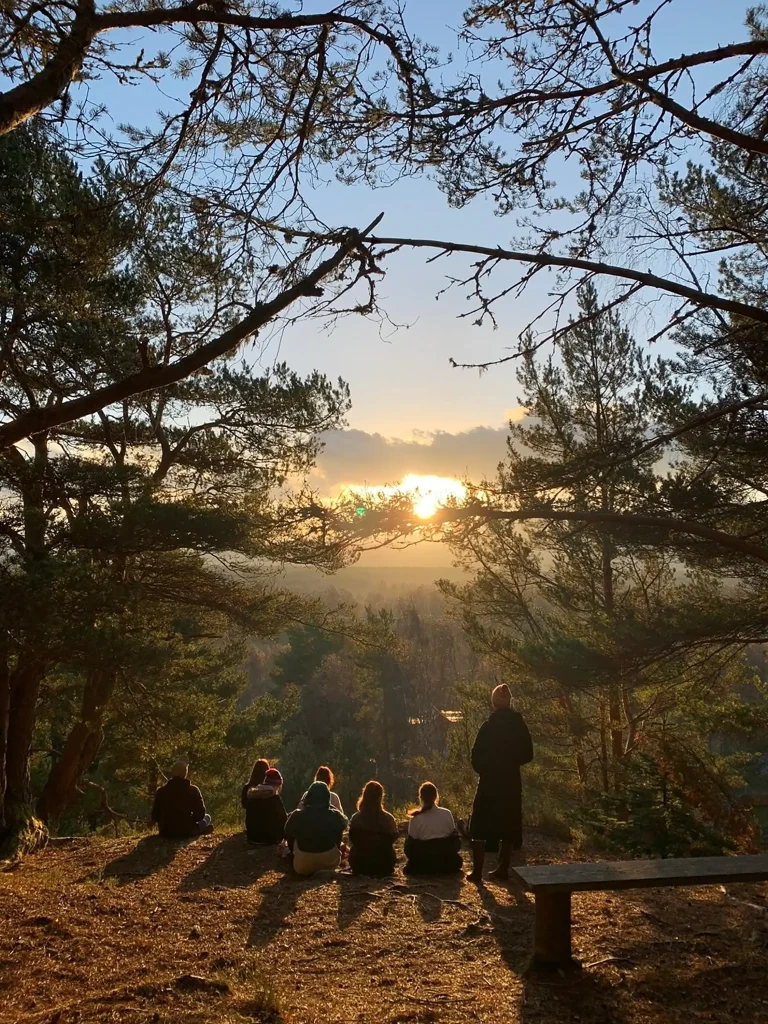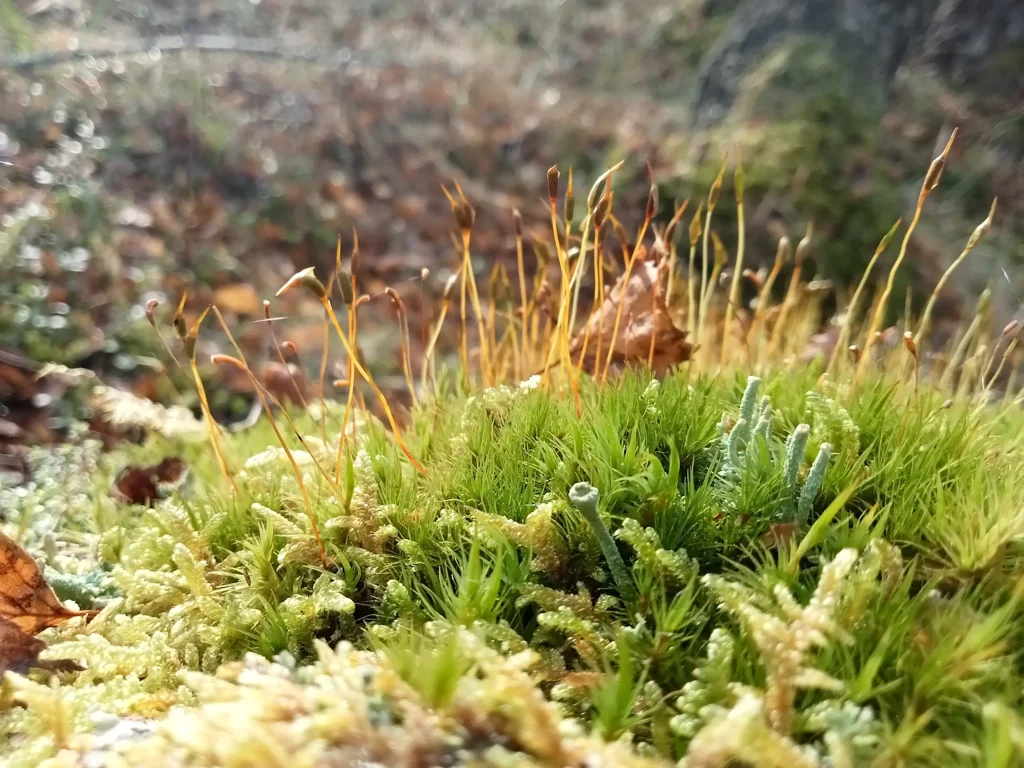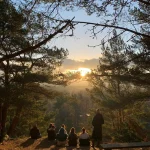I recently returned from a weekend away with friends up north, in the glorious highlands – the Cairngorms. It was exciting, as I had not escaped the congested central belt for some time. Being mid-November, I did think the trip might be cold and miserable, as I am a wuss when it comes to the dark, winter nights (yes, I am an ecologist and I work outdoors – I still feel the cold!) The trip was organised by a good friend, who wanted us to explore how nature affects our wellbeing. I already knew its effect on me would be positive, but our group of friends is diverse, with some ‘non-outdoorsy’ people who were clearly going to be out of their comfort zone.
So, I drive north for three hours, car full of friends and snacks, on a Friday where gales were ravaging the country. The trip was slow, with an amber warning of heavy rain and strong wind, but after a quick stop at the tourist-pleasing House of Bruar, and scooting past the sparkly Christmas lights in Aviemore, we arrived in the sleepy village of Boat of Garten. The incredibly dramatic landscape – the heathlands, the hills – were still breathtaking in the evening gloom. This is a paradise for adventurers, for hikers and bikers – or people just wanting to find a bit of calm.

The Cairngorms plays a huge part in Scotland’s heritage. We are lucky to live in a country that places importance on restoring, maintaining and protecting it’s natural or historic landscapes, which does not come without its conflicts and challenges. Overtourism, land management and raptor persecution are all prevalent issues, but protecting carbon-absorbing peatlands is imperative in the global challenge to reduce greenhouse emissions. However, this takes away land suitable for livestock, as overgrazing can release this trapped carbon. As the eyes of the world are now in Egypt for Cop27 (after being in Glasgow last year), how does Scotland balance what is best for itself – and for others?
Dùthchas (Scots Gaelic) is the connection between people, nature and understanding of what we call home. The loss of ancient cultures, language and that connection to nature is understood by most – we mostly all speak English, most of us live in towns or cities, and everyone knows about the terrifying climate crisis. The end of the Celtic Calendar is celebrated with Halloween, with November bringing the start of a new year. This may seem strange to us Gregorian followers, but on further reflection, this concept of a new year starting with stillness – not fearing, but appreciating the necessity of death – makes sense (minus the ritualistic slaughters). It is a time of dormancy to reflect on the need for recovery before new life can be born again. If nature needs a rest, surely we do too? I’m not saying we need to run around bonfires naked – but we can still learn life lessons from old philosophies and take what we need. Other perspectives help us understand how individually, and as a society, we construct our worth and values, and whether we do so justly.
Being an ecologist, I was naturally interested in the trees and birdsong – and fairly sceptic of old Celtic myths or legends. Boat of Garten (nicknamed the osprey village) is teeming with life – beside the River Spey, it boasts sightings of buzzards, flashes of colour from kingfishers and the wails of curlews, lapwings and capercaillies. There are hovering kestrels, trills from oystercatchers and tufted ducks (with their charming quiffs) floating along – the list goes on (yes, I was that kid who collected RSPB bird pins). There is also a wildlife webcam set up to overlook a family of ospreys in Loch Garten.

So we go for walks, through the crisp woodlands and lichen-laden birches. The lichen is such a striking mint green, I swear it would glow under UV light. The birch bracket mushrooms are countless – sprouting up all over the branches, recycling the deadwood and keeping that good ol’ nutrient cycling going. Despite the recent weather down south, the climate here seems to be in a bubble of its own – it’s fresh, still and dry. The mountains loom overhead, with a scarf of low mist hovering on the horizon. People often think that when we get into autumn and winter, there is not much to see once the golden leaves fall. But mushrooms are everywhere; winter chanterelles are ripe for picking. The cold rain brings vibrant, spongy sphagnum, and migrating geese fly above (with that classic V formation). Although it is already too cold for bats to be out and about, and yes, animals are getting ready to hibernate, there is still badger activity up until the end of November (the Stratshspey Badger Hide offers views outside an ancient badger sett – they can be hundreds of years old!).
Surrounded by the enigmatic magic of the forest, it becomes apparent how such Celtic folklore arose – hearing tales of Thomas the Rhymer, or the high deeds of Finn MaCool, navigating their way through landscapes that still hold such mystique today. Being very much in our own little world, we were truly immersed – exactly what we needed to return to our simpler, more primitive values. I learnt another gaelic word, bruchlas – the fluttering sound birds make when they land in trees. Also, the letters of the Gaelic alphabet correspond to names of trees: Ailm (elm) for A, Beith (birch) for B, Calltain (hazel) for C, and so on. I’m not saying we should all become pagans… but there is an important lesson to learn. These old tales show respect towards natural forces bigger than ourselves, things even our modern-day technology can’t understand. If something as big as nature needs stillness, maybe our society shouldn’t place all its value on growth and productivity, but learn to hold back and realise that to sustain ourselves, we must stop and let ourselves, and nature, rest – as is natural.
by Nicole Baxter (EP Ecology Seasonal Ecologist)
